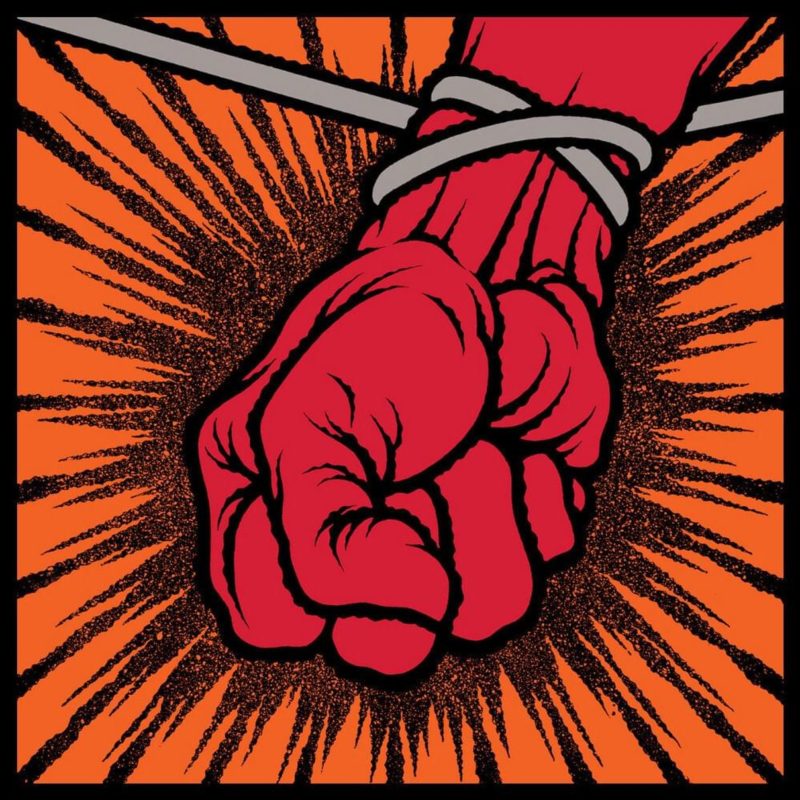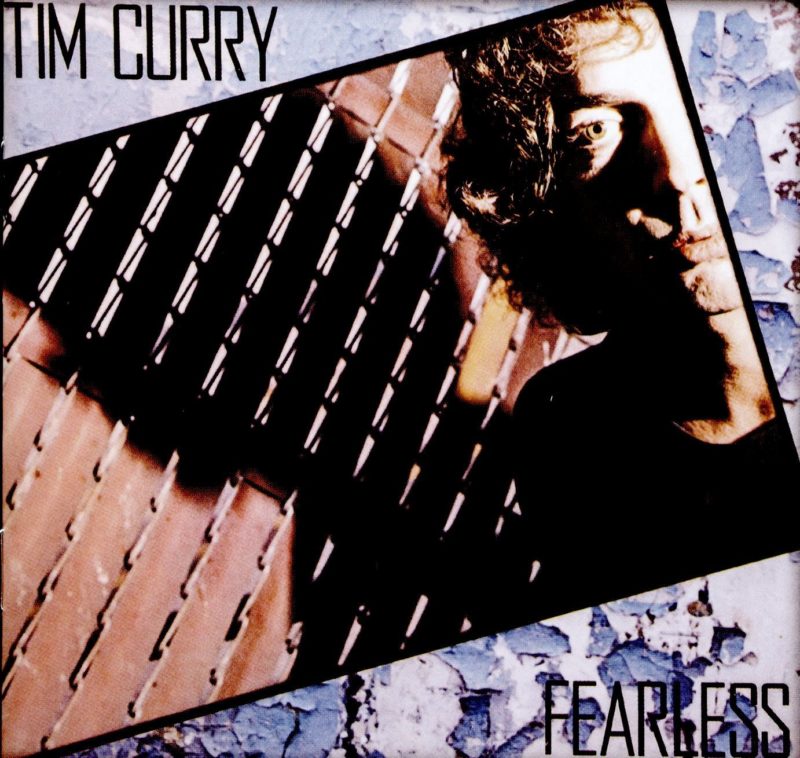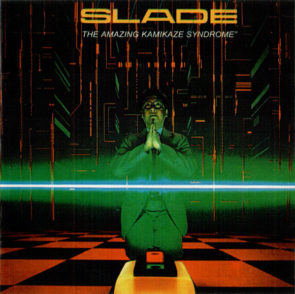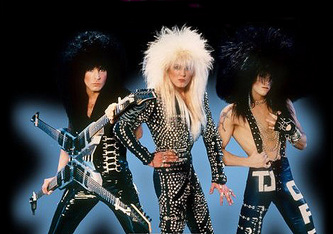
St Anger is Metallica’s 8th studio album. It was released in 2003 through Elektra Records, and is famous for being very bad. Worse than previous Metallica albums. Worse than diarrhea. Worse than papercuts. Worse than getting banned from a chat room just when you’re ready to sling a mortally wounding insult. Worse than long trips in a car that’s making a rattling sound. Worse than when the pastor says “now, let’s go a bit deeper into Paul’s contextual usage of ‘divinity’…” at 11:59am on a Sunday morning. Worse than spiders. Worse than Vegemite. Worse than spiders coated in Vegemite. Worse than Vegemite coated in spiders. Worse than hard drive failures. Worse than finishing your Greek homework and realising you forgot the accents. Worse than merging two columns in a 10,000 line database, and the line count is off by one. Worse than people calling the internet “the interbutts”. Worse than puns that aren’t puns (ie, referring to Fox News as “Faux Noose”). Worse than remakes of movies that came out last year. Worse than an old friend wants to catch up and after half an hour of small-talk he says “have you heard of an exciting new business opportunity?” Worse than a friend who tells an unfunny joke and pauses for you to laugh. Worse than filling up your petrol tank from a diesel pump. Worse than knowing that you can’t go to a Halloween party dressed as Charlie Chaplin because everyone will assume you’re Hitler. Worse than holding the bag. Worse than hodling the bag. Worse than having your mother date your high school bully. Worse than having to close your Satanic pedophile ring underneath a pizzeria because people are getting wise. Worse than Googling a computer problem and discovering you’re the first person it’s ever happened to. Worse than realising you were born to play a sport that nobody enjoys. Worse than having a special interest that brings you into contact with nonces. Worse than spontaneously exploding. Worse than biting off half a sushi roll and the seaweed is all ragged and you know there are ragged parts stuck to your teeth. Worse than calling someone “cringe” and then discovering they run a charity for blind dyslexic orphans. Worse than learning enough 3D modeling to notice fake special effects in movies but not enough to be hireable to work on a movie. Worse than being in a Metallica cover band circa 2003. Worse than the 2005 film Elektra. Worse than the fact we’re now 1/4 through Biden’s first term and 80% of all political news stories are still about Trump. Worst than women who describe themselves as “MILFs” when they’re 21 years old. Worse than typing out a 800+ word rebuttal to something that was autogenerated by an AI. Worse than realising you’ve pronounced “hygge” incorrectly for 4 years. Worse than being a Pitchfork hipster and building a time machine and then using it to kill someone other than Hitler because it’s ironic. Worse than being a hand model and your new roommate is a compulsive battle-axe juggler and shuriken collector. Worse than starting something and not finishi

There’s a British TV figure known for his performances of a pirate, a transvestite, a mass of sentient toxic sludge, a roided-up penguin, a horned devil, and an evil clown. But enough about Boris Johnson, let’s talk about Tim Curry.
David Bowie was a musician who dabbled in acting. Curry was the opposite: an actor with aspirations of rock stardom. But where Bowie’s film appearances are (overall) remembered fondly, Curry’s albums are barely remembered at all. His failure to “break out” as a rock frontman in the late 70s evidently galled him, as seen in interviews like this one, where he takes shreds out of a journalist for asking him about Rocky Horror Picture Show (“I think that it is one of the most boring journalistic openings that I have ever heard”). These albums are sad to experience as a Curry fan: listen to them and unfulfilled dreams float past.
Regrettably, the same is not true for good music. 1979’s Fearless has one outstanding moment: “I Do The Rock” lives up to its title, shameless and vulgar and full of panto swagger. You’ve never heard “rawwwhhhkk” pronounced the way Tim Curry pronounces “rawwwhhhkk”. Album closer “Charge It” is less memorable but at least has a pulse. These two songs could have made it onto a good Lou Reed album, unlike the others, which would more or less make weight on a shitty Lou Reed album.
The songwriting is a flat line: boneheaded rockers like “Right on the Money” and “Hide This Face” sound written by hacks-for-hire from the bottom tranche of A&M’s songwriting division (dismayingly, they were written by Curry himself). Robotic performances with no dynamics means Curry has to salvage them with the force of his personality, and although he has charisma and a good voice, he doesn’t understand “singing” that well: often his vocal work devolves into shouted theatrical tirades over repetitive musical motifs. It’s amusing for a few songs, less so for a full album.
“Paradise Garage” is a would-be disco song with a Bee Gees bassline buried beneath a tacky wall of guitars and Curry (apparently) making up lyrics on the spot in the recording booth. It has all the club potential of Little Jimmy Osmond. “Cold Blue Steel and Sweet Fire” is a cover of Joni Mitchell, a woman who has dubious right to oxygen, let alone covers.
Curry needed better songs, but even if he’d had them, where does a man like him fit in Thatcher’s Britain? The most relevant cultural moment (campy, wig-snatching glam rock) had passed five years earlier – Queen aside, 1979 was year of Blondie, ABBA, and The Police. Soon Bowie and Boy George would almost be issuing public bulletins declaring that they weren’t gay. Fearless is an interesting curio from a straightlaced time, but little more. Not worth getting for one great song.
I almost forgot to tell you about the power ballad “SOS”. I have a suggestion, though. Burn a copy of Fearless, but skip over track 4. Got it? Your new copy should go straight from “I Do The Rock” to “Cold Blue Steel and Sweet Fire”. Now take the original CD and drive it to an empty field somewhere. A place where no bystanders would be hurt if six megatons of thermobaric ordnance were to strike the ground, if you catch my meaning.
Then, contact the CDC, the FBI, the DHS, the MI6, every alphabet agency your country has. Tell them the CD contains anthrax, national secrets, fascism, child porn, and systemic racism. Yes, all of those things at once. Say that the anthrax spores are arranged in the shape of a naked eight-year-old child-of-color being molested by a government agent who’s sig heiling with one hand and downgrading the child’s future credit score with the other. Then retreat to a safe distance, strap on heavy-duty protective goggles, and watch the world become a better place.

I can remain silent no longer on an important topic: glam rock isn’t the same as glam metal. Not at all. Anyone who writes “glam rock/metal” (as though these are fuzzy or interrelated concepts) deserves to feel the sting of the lash across their pitiful shoulders.
“Glam rock” is a style that became popular in Great Britain in the early 70s: think Wizzard, T-Rex, and Roxy Music and also think platform boots, scarves, glitter, and flared jeans. The music was 50s-inspired rock and roll with a warm, summery vibe. Glam rock could be pretentiously analyzed as “radical self-manufacture”: its stars were big and cartoony and fake, but not in an “I’m lying to you” way. It was more like “I’m inviting you into a shared dream”. For a few years, the dream was so compelling that audiences accepted the invitation. You could really believe that David Bowie was an alien, Marc Bolan an elf, and Gary Glitter a good bloke with an unimpeachable internet search history.
Glam rock collapsed after three years, replaced by disco and limp-wristed parodies of itself (Mud, Bay City Rollers, Insert Third Example). Bowie salvaged his career from the glitter-strewn rubble; nobody else did. Look at the post-1975 discography of a middle-of-the-pack glam band you’ll see five or six flop albums in a row (with titles like Remember Us? and We’re Back! and Will This Work? and Our Manager Made Us Hire a Bagpipe Player), followed by a break up, followed by a 2001 nostalgia concert featuring two original members, followed by the end.
That’s glam rock. Glam metal (also known as hair metal) is very different: a variant of NWOBHM that became popular in Los Angeles in the mid-to-late 80s. Famous bands include Motley Crue, Poison, and so forth. Like glam rock it had outrageous fashion sense, but unlike glam rock it was always the same fashion sense. Bolan didn’t look like Bowie who didn’t look like Brian Ferry, but all glam metal bands dressed the same.

Glam metal was ugly, cynical, and had no soul. Track one would be about fisting a hooker’s ass. Track 2 would be an overwrought ballad about the power of love. It was plastic music, totally disingenuous and shameless about it. It snorted rails of coke off the bottom of the barrel. Tucker Max once said there are “beer and girls” people (those who party to have fun) and “coke and strippers” people (those who party as an act of nihilistic self-destruction). Glam metal was the soundtrack for the letter. The music wasn’t feel-good, it was feel-dead, and often become-dead: Motley Crue’s “Kickstart My Heart” is about Nikki Sixx being resuscitated after going into drug-induced cardiac arrest. Five years earlier, his singer had killed a man in an alcohol-induced car accident. Were you in an 80s glam metal band? I’m sorry that your music career is over, but at least you now have a tear-jerker biography about overcoming addiction to sell to a major publisher.
So why do I bring all this up in a review of a half-forgotten Slade album? Because they’re notable as one of the few bands that played both styles.
They achieved fame in the 70s as part of the glam rock movement: they had six UK number ones. I don’t know why they’re called Slade. Like many glam bands they had a gimmick: they spelled the names of their songs wrong. “Mama Weer All Crazee Now”, “Skweeze Me, Pleeze Me”…I used to think there was a sharp line between artistic affect and crippling dyslexia, but Slade proves that it’s all just gray.
It wasn’t all smooth sailing. Slade had the profound misfortune of having “Merry Xmas Everybody” as their biggest chart success. A Christmas song is the worst kind of hit you can have: it means you become pigeonholed as a naff novelty band. It also means the world forgets you exist for 51 weeks out of the year.
After “Merry Xmas Everybody”, glam rock became unpopular and Slade’s number ones (and soon twos, etc) stopped coming. But in 1983 they managed a minor comeback with The Amazing Kamikaze Syndrome, which broke them in America with a harder, metal-tinged sound.
It’s a loud, hard-rocking and sleazy record. The guitars are like a brick wall and the vocals are like diamond chainsaw tearing through that wall: I don’t know how Noddy Holder’s voice survived so many years of abuse, but science is still asking that question of Nikki Sixx’s heart. “Run Runaway” is a great song, with Jim Lea somehow making an electric fiddle work in a pop context. “Slam the Hammer Down” could almost be a Chuck Berry song, although 80s technology turns it into a massive steroid-pumped gorilla of a track, almost scary to listen to. You feel as if you could get crushed by it.
When the rock-all-the-time approach gets old, you get the eight-minute-plus “Ready to Explode”, which is a weird metal epic combining Queen, Meat Loaf, The Cars, and Iron Maiden. The band pulls influences from just about anywhere, but surprisingly they make most of them work. “My Oh My” is a power ballad with drums so reverb-drenched they might have been recorded from the bottom of the Grand Canyon. It’s like a parody of what music sounded like in the 80s, but it flows nicely and is quite memorable.
“(And Now the Waltz) C’est La Vie” was an odd choice for a single – a Broadway-style ballad with drums that never seem to land where you’d expect. The rest of the album finds the band taking no risks and playing to their strengths, delivering guitar-driven songs with keyboards adding a little color.
Slade wasn’t able to sustain this level of success. Soon they went back being a nostalgia band, and while this isn’t the worst kind of death, it’s a death regardless. Their biggest impact in the 80s might have been the fact that Quiet Riot covered one of their hits. It’s good that they managed this little comeback, but (with typical Slade) bad luck glam metal imploded beneath them just as suddenly as glam rock had. It’s like being aboard a sinking ship and getting rescued by the RMS Titanic.




